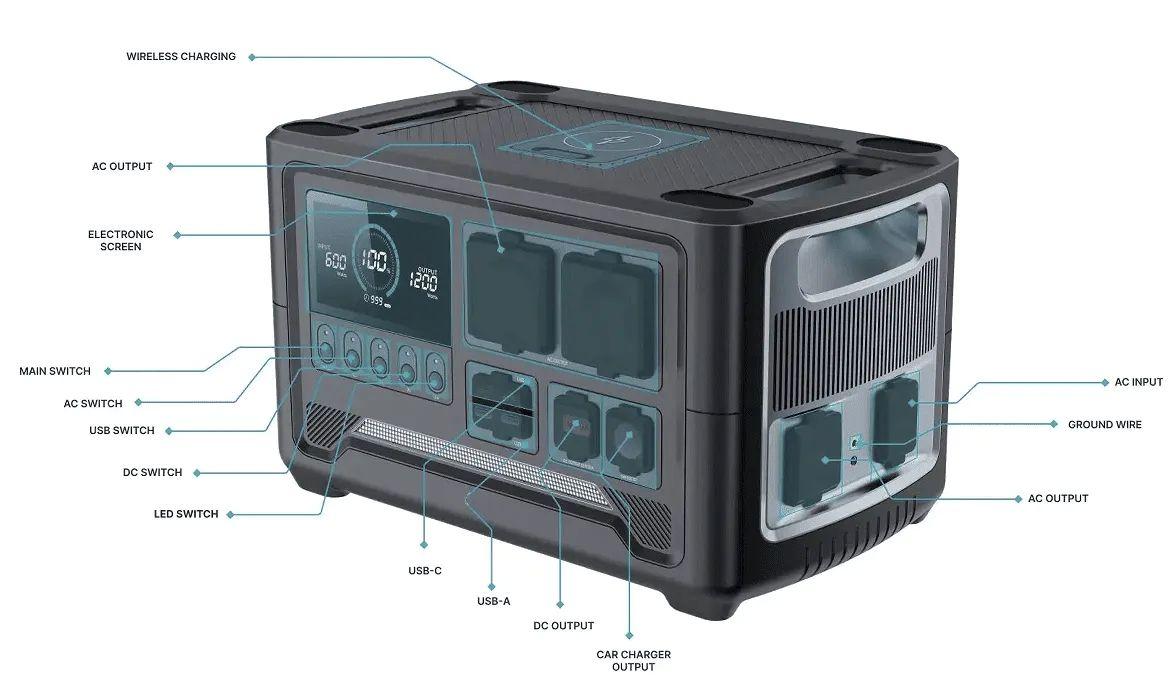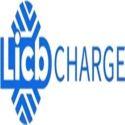Notifications

9 minutes, 9 seconds
-3 Views 0 Comments 0 Likes 0 Reviews

LiCB Charge, a leading EV charger manufacturer in China, offers reliable AC and DC electric vehicle charging stations along with comprehensive charging solutions.
In today’s connected world, reliable access to electricity is more important than ever. Whether you’re preparing for unexpected power outages, planning an extended camping trip, or seeking an eco-friendly alternative to gas-powered generators, a portable power station has become an essential tool for many households and outdoor enthusiasts.
But what exactly is a portable power station? How does it work, and what factors should you consider before buying one? In this comprehensive article, we’ll explore how these innovative devices operate, their key features and benefits, how they compare to traditional generators, and how they’re transforming portable and emergency power solutions.
A portable power station is a compact, self-contained unit that stores electrical energy in rechargeable batteries and enables you to power or charge various electronic devices anytime, anywhere. Unlike conventional gas generators—which rely on fossil fuels, produce noise and emissions, and require frequent maintenance—portable power stations use clean battery technology to deliver quiet, efficient electricity.
Often called battery-powered generators or solar generators when paired with solar panels, a typical portable power station consists of three main components:
Battery Pack: The core energy storage, usually lithium-ion or lithium iron phosphate (LiFePO4) cells, known for long cycle life and safety.
Power Inverter: Converts stored DC (direct current) power into AC (alternating current), compatible with household appliances.
Ports and Outlets: Multiple output options—such as standard AC outlets, DC carports, USB-A, USB-C, or wireless charging pads—allow simultaneous charging or powering of multiple devices.
From smartphones and laptops to mini fridges, CPAP machines, drones, and cameras, portable power stations keep your essential devices running whether at home, on the road, or deep in the wilderness.
The principle behind a portable power station is simple but effective:
Energy Storage: The built-in battery stores energy supplied from a wall outlet, car charger, or solar panels.
Power Conversion: When you connect a device, the inverter converts DC power into AC electricity, just like a home socket.
Power Delivery: The converted electricity is delivered safely and steadily through the appropriate port or outlet.
Many models also offer pass-through charging, allowing you to recharge the power station while simultaneously powering your devices—a convenient feature for extended use.
One of the biggest advantages of modern portable power stations is their versatile charging options:
Wall Outlet Charging: The fastest and simplest—just plug into a home AC outlet and charge overnight.
Car Charging: Use your vehicle’s 12V socket to recharge on the go.
Solar Charging: Many stations support solar panels, enabling clean, renewable energy generation wherever sunlight is available—ideal for off-grid living, camping, or eco-friendly backup power.
| Feature | Portable Power Station | Gas Generator |
|---|---|---|
| Power Source | Rechargeable battery, optional solar input | Gasoline, diesel, or propane |
| Noise Level | Virtually silent | Loud engine noise |
| Emissions | Zero emissions | Produces exhaust fumes |
| Indoor Use | Safe indoors | Outdoors only (carbon monoxide risk) |
| Maintenance | Minimal (battery care) | Oil changes, fuel refills, tune-ups |
| Fuel Cost | None if solar-powered | Ongoing fuel expense |
While gas generators can supply higher wattages over longer periods, portable power stations are rapidly closing the gap thanks to increasing battery capacities and solar integration.
Unlike noisy gas generators, these units operate silently, making them ideal for nighttime use, campsites, or noise-sensitive environments.
Without fossil fuels, portable power stations produce zero emissions. Paired with solar panels, they provide renewable energy, reducing your carbon footprint and fuel costs.
No exhaust fumes or ventilation needed, making them perfect for indoor applications like powering medical devices or home offices during outages.
No fuel, oil, or moving parts means minimal upkeep—just keep the battery charged and perform routine checks.
Designed for easy transport, many units include handles, wheels, or compact forms to fit conveniently in cars or RVs.
Support for AC, DC, and solar inputs allows recharging almost anywhere.
Portable power stations are incredibly versatile and used for:
Home Backup Power: Keep refrigerators, lights, Wi-Fi, and medical devices running during outages.
Outdoor Adventures: Ideal for camping, hiking, tailgating, and RV trips.
Remote Work: Power laptops, drones, cameras, and communication devices anywhere.
Emergency Preparedness: Reliable energy source during storms or disasters.
Recreational Events: Power festivals, parties, or backyard gatherings.
DIY Projects: Run power tools in areas without outlets.
Battery Capacity: Measured in watt-hours (Wh). Small units (150–300Wh) suit phones and laptops; larger models (500–2000Wh+) can handle appliances or power tools.
Power Output: Check AC wattage rating to ensure it can run your devices; some support surge power for startup spikes.
Port Variety: More ports (AC, USB-A, USB-C, DC, wireless) mean greater device compatibility.
Charging Speed: Faster recharge times and multiple input methods reduce downtime.
Portability: Weight, size, and ergonomic features like wheels or handles matter for frequent transport.
Solar Compatibility: Ensure easy connection to solar panels for off-grid power.
Smart Features: Bluetooth or app connectivity for monitoring battery status, power flow, and charge cycles.
Charge Regularly: Keep the unit topped up and test periodically.
Store Properly: Store in cool, dry places away from direct sunlight or extreme temperatures.
Use Proper Cables: Always use manufacturer-recommended cables and adapters.
Monitor Load: Avoid overloading the inverter—keep device wattage within limits.
Driven by advances in battery tech and rising demand for renewable, off-grid power, portable power stations continue to evolve. Expect:
Larger capacities and faster charging.
Modular, expandable designs.
Smart home and solar integration.
Enhanced app control and energy management.
From camping and van life to home backup and emergency preparedness, portable power stations provide quiet, clean, and reliable electricity wherever you need it—without the noise, fumes, or hassle of traditional generators.
As technology advances, these devices are becoming more affordable, accessible, and essential to modern life. Investing in a quality portable power station, paired with renewable options like solar panels, empowers you with energy independence and peace of mind wherever you go.
Ready to embrace clean, quiet power on the go? A portable power station is one of the smartest, most versatile tools you can add to your modern toolkit.Know more about Google SEO Directory
China EV Chargers EV Charger Manufacturer EV Charging Solutions

